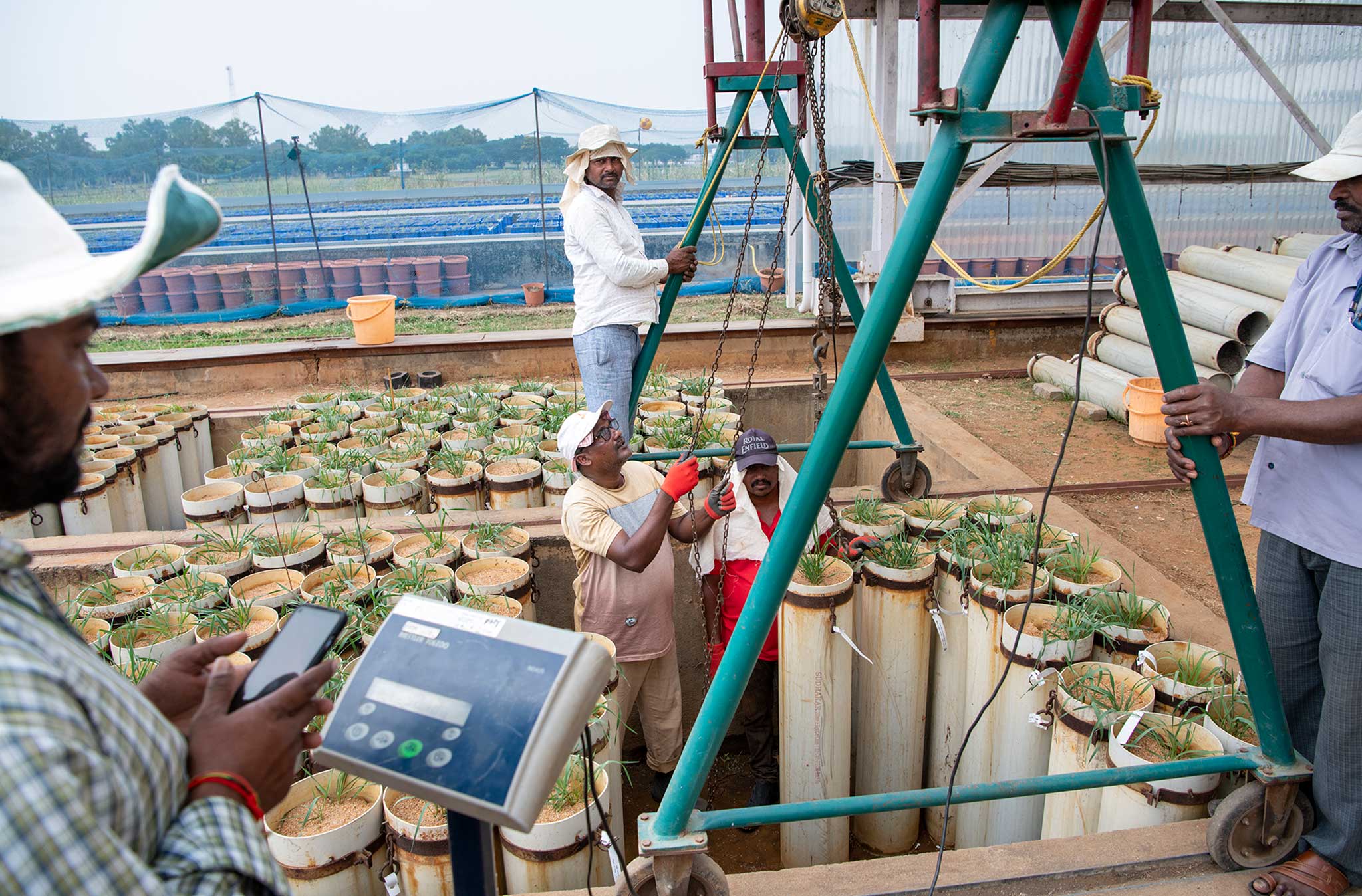
The Crop Physiology and Modelling team is committed to understanding the intricate relationship between crop genotypes and their environment. We recognize that this interaction plays a crucial role in determining genetic gain and adaptation to abiotic stresses. To address this, we employ innovative methods and advanced technologies to characterize the environment, design relevant phenotyping strategies, and empower breeding programs for better selection.
A key focus of our work is the development and implementation of high-throughput phenotyping platforms (HTP). These platforms, such as LeasyScan and the Lysimeter facility, enable precise and efficient characterization and screening of crop genetic materials for abiotic stress adaptation.
With LeasyScan, a "camera to plant" technology, we can rapidly assess component traits of adaptation within just 4-6 weeks. The Lysimetric system, equipped with a rainout shelter facility, allows us to impose various stress conditions and evaluate plant performance. Additionally, we are exploring the use of AI technology and UAV-based field phenotyping to digitize field trials and multi-location trials, enhancing data collection and analysis.
In our efforts to support nutrition-inclusive breeding programs, we are actively developing sensor-based technologies for quick assessment of nutritional traits. This includes benchtop and mobile near-infrared spectroscopy (NIRS) for macronutrients, X-ray fluorescence (XRF) for micronutrients, and HarvestMaster and computer tomography for post-harvest traits. By incorporating these technologies, we aim to enhance the nutritional qualities of crop varieties and contribute to improved food security and nutrition.
The Crop Physiology and Modelling team at ICRISAT works in close collaboration with national agricultural research systems (NARS) and breeders from partner programs. By leveraging our expertise and state-of-the-art facilities, we assist in screening and characterizing elite lines, national checks, advanced breeding lines, and breeding populations for crop improvement programs. Our goal is to enable breeders to select varieties with enhanced adaptation to changing climates, particularly in relation to drought, heat, and salinity stresses.
Through our research and collaborative efforts, we strive to bridge the gap between genotype and environment, empowering breeders and stakeholders with the knowledge and tools needed for precise selection and crop improvement. By combining the power of crop physiology, advanced modelling techniques, and innovative phenotyping platforms, we contribute to the development of resilient and sustainable agriculture in dryland regions.